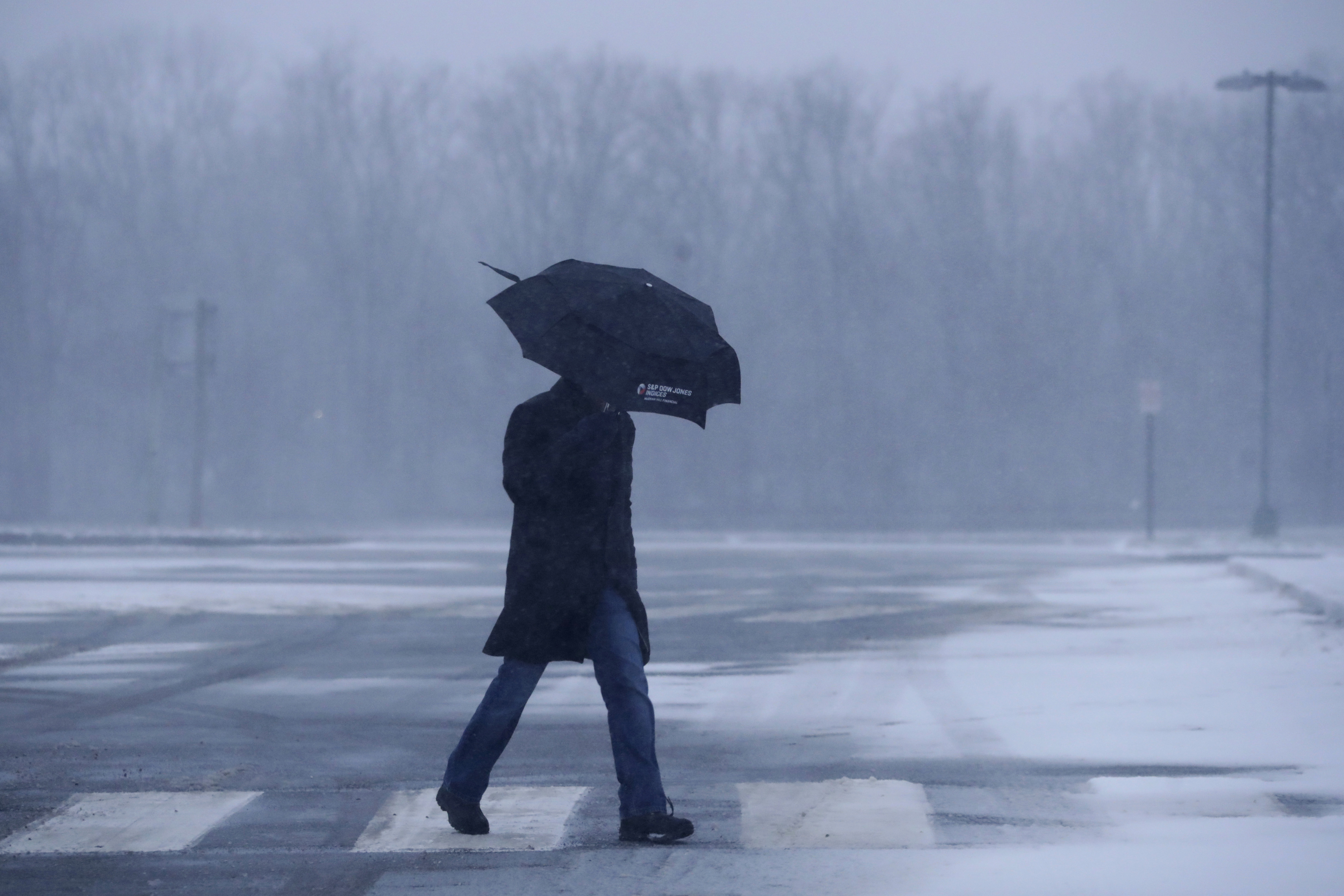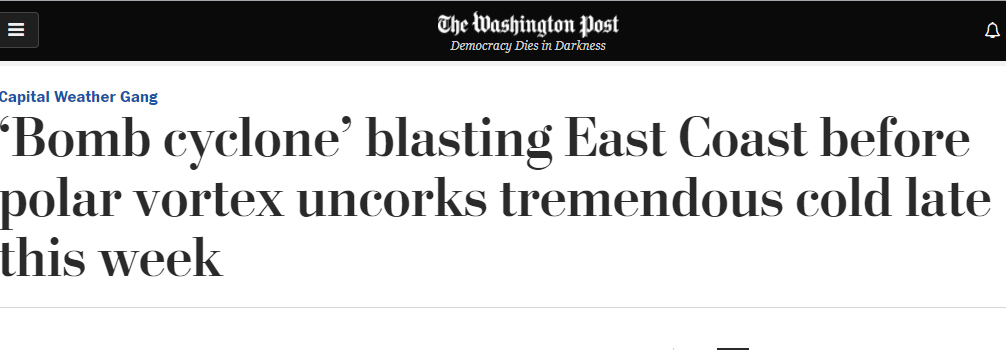
Many of America’s meteorologists won’t be happy until America is scared witless.
With the “bomb cyclone” working its way into the northeast today, there are some very happy weatherpeople.
“Bomb cyclone” is the newest phrase in weather, which achieved critical mass this week when the widely-read Capital Weather Gang in the Washington Post ran this headline:
“Bomb cyclone” is the new “polar vortex”, both phrases, pulled from the dusty books, ratcheting up the media hysteria. The Capital Weather Gang’s discovery and use of the phrase is believed to have sparked its newfound popularity.
The phrase isn’t new, though. It was invented by McGill University meteorology professor John Gyakum, who used it in a paper he wrote with an MIT meteorologist in 1980.
He dislikes the phrase now.
“When I talk about these explosively developing storms, I go through the trouble of mouthing the terms ‘explosively developing,’ and I don’t use ‘bomb,’” Gyakum told HuffPost. “It’s somewhat inappropriate when you consider other aspects of the world right now.”
Fred Sanders, Gyakum’s co-author of the 1980 paper, is believed to have first used the term in 1964, according to a former student.
Gyakum says although he doesn’t use the term anymore, he thinks it serves a purpose in a world where the language needs to escalate to maintain people’s attention.
“A lot of focus in coastal areas is on hurricanes in the summertime,” he said. “A lot of time during winter, people say it’s easy, the season is over, we don’t have to worry about hurricane-force winds. But a place like Hilton Head, South Carolina, which had been threatened earlier this year and impacted by a few hurricanes, is particularly prone today to the effects of an explosively developing cyclone.”
“In terms of trying to convey meteorological features to the general population, putting in words like that could confuse people more, or, for some people, alarm them,” National Weather Service Director Louis Uccellini told HuffPost.
In fact, you’ll notice the NWS didn’t use the phrase this morning.
Here is the latest Upper Level Water Vapor IR imagery from the new GOES 16 Satellite. The imagery is text book as far as indicating explosive cyclogenesis, and a major east coast storm. The surface central pressure has fallen 11 millibars over the past 3 hours. pic.twitter.com/ZmjvBnU7iQ
— NWS New York NY (@NWSNewYorkNY) January 4, 2018
But armed only with that tweet, a Staten Island newspaper invoked it to goose things up.
'Bomb cyclone' confirmed by National Weather Service https://t.co/O3FhRI9NaV
— SIAdvance (@siadvance) January 4, 2018
Classic.
The phenomenon described by the use of “bomb cyclone” will sound familiar to northeast states. They’re “nor’easters”, although Marshall Shepherd, director of the University of Georgia’s atmospheric program and a former president of the American Meteorological Society, says not all nor’easters are bombs.
But not all big snowstorms are blizzards either, but you don’t see that technicality getting in the way of stirring up the panic.

